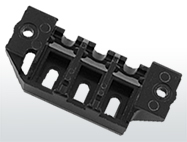BMC Thermoset Molding
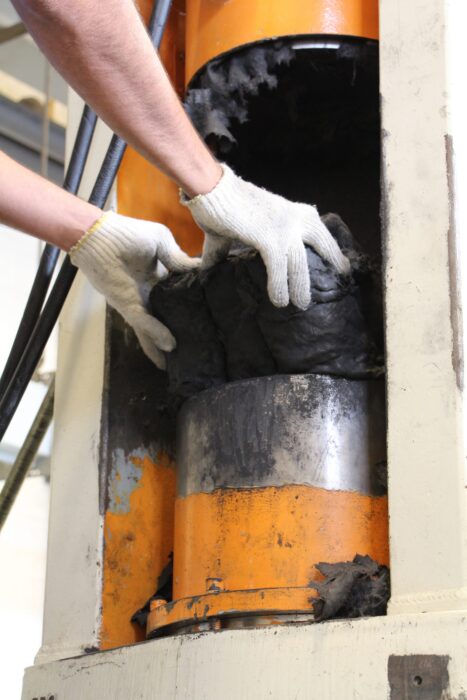

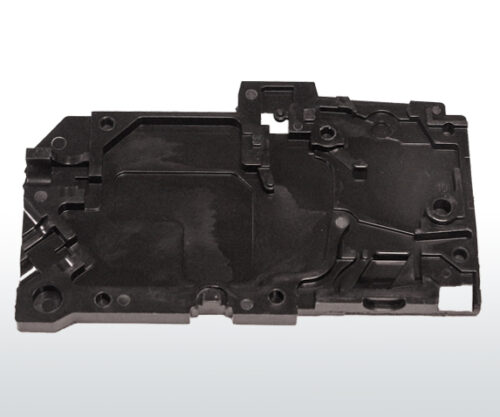 Why are thermosets commonly used as a molding material for electrical parts and component assemblies? Thermosets are implemented in electrical applications due to the materials’ exceptional electrical stability, high dielectric strength, and resistance to arc and track which protect internal components from electrical charge and risk of fire or product failure. Parts including circuit breakers, terminal blocks, and electrical connectors are molded from thermoset materials to ensure product safety. Whereas a thermoplastic can degrade, disfigure, or ignite; thermosets such as unsaturated polyester BMC and phenolic molding compounds remain durable and strong when exposed to such electrical elements. From a cost comparison, thermosets are a commercial option available at a low cost per lb. compared to engineered thermoplastics with similar type of electrical and heat resistant properties. Common thermoset materials used in electrical applications include both phenolic and bulk molding compounds (BMC). (more…)
Why are thermosets commonly used as a molding material for electrical parts and component assemblies? Thermosets are implemented in electrical applications due to the materials’ exceptional electrical stability, high dielectric strength, and resistance to arc and track which protect internal components from electrical charge and risk of fire or product failure. Parts including circuit breakers, terminal blocks, and electrical connectors are molded from thermoset materials to ensure product safety. Whereas a thermoplastic can degrade, disfigure, or ignite; thermosets such as unsaturated polyester BMC and phenolic molding compounds remain durable and strong when exposed to such electrical elements. From a cost comparison, thermosets are a commercial option available at a low cost per lb. compared to engineered thermoplastics with similar type of electrical and heat resistant properties. Common thermoset materials used in electrical applications include both phenolic and bulk molding compounds (BMC). (more…)
 Why are thermoset composites like phenolic and bulk molding compound commonly used material in automotive applications? Molded thermoset parts and components have excellent material properties with regards to resistance against high temperatures, corrosion, and chemicals and automotive fluids. Processing wise, thermosets may be injection molded, or compression molded. Thermoset injection molding is a fast-cycle process that can produce high volumes of parts with complex geometries that may be difficult or costly to achieve in metal or stainless steel. Property-wise, thermosets offer chemical resistance against many types of automotive fluids such as oils, transmission fluids, and coolants. Whereas a thermoplastic molded part may degrade in such chemicals and oils, thermoset parts remain durable and strong, allowing an internal product assembly to remain safe for use. Another material benefit of thermoset composites towards automotive applications is thermosets heat resistance and ability to withstand high operating temperatures. (more…)
Why are thermoset composites like phenolic and bulk molding compound commonly used material in automotive applications? Molded thermoset parts and components have excellent material properties with regards to resistance against high temperatures, corrosion, and chemicals and automotive fluids. Processing wise, thermosets may be injection molded, or compression molded. Thermoset injection molding is a fast-cycle process that can produce high volumes of parts with complex geometries that may be difficult or costly to achieve in metal or stainless steel. Property-wise, thermosets offer chemical resistance against many types of automotive fluids such as oils, transmission fluids, and coolants. Whereas a thermoplastic molded part may degrade in such chemicals and oils, thermoset parts remain durable and strong, allowing an internal product assembly to remain safe for use. Another material benefit of thermoset composites towards automotive applications is thermosets heat resistance and ability to withstand high operating temperatures. (more…)
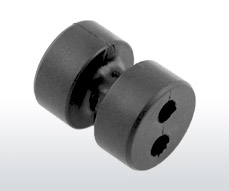 Phenolics, or phenolic molding compounds, are a type of thermoset composite or plastic molding material. Phenolics have history dating back to the very first plastic, bakelite, that derived from Leo Baekeland in the early 1900s. Despite a long history, phenolics thermosets are still commonly molded today for various applications and end products. The physical properties of molded phenolics provide a molded part or component exceptional dielectric strength, electrical insulation, heat resistance, and chemical resistance. These properties allow phenolics to be molded for a variety of safety-critical components in Electrical, Automotive, and Industrial markets. In its raw state, phenolic is similar to thermoplastics such as nylons or ABS in a granular-like form, filled with glass fibers, minerals, or bead fillers dispersed within the resin. Molding wise, phenolics are generally injection molded, but can also be compression or transfer molded. Injection molding phenolics require the use of a molding machine with a screw and barrel to plasticize the material prior to injection. (more…)
Phenolics, or phenolic molding compounds, are a type of thermoset composite or plastic molding material. Phenolics have history dating back to the very first plastic, bakelite, that derived from Leo Baekeland in the early 1900s. Despite a long history, phenolics thermosets are still commonly molded today for various applications and end products. The physical properties of molded phenolics provide a molded part or component exceptional dielectric strength, electrical insulation, heat resistance, and chemical resistance. These properties allow phenolics to be molded for a variety of safety-critical components in Electrical, Automotive, and Industrial markets. In its raw state, phenolic is similar to thermoplastics such as nylons or ABS in a granular-like form, filled with glass fibers, minerals, or bead fillers dispersed within the resin. Molding wise, phenolics are generally injection molded, but can also be compression or transfer molded. Injection molding phenolics require the use of a molding machine with a screw and barrel to plasticize the material prior to injection. (more…)
As a type of plastic material, thermosets can be molded in similar molding processes as thermoplastic materials such as nylon, ABS, and polypropylene. Thermosets can be injection, compression, and transfer molded. Each molding process offers different benefits and disadvantages depending on the finished part’s geometry, assembly, and commercial aspects of the program. OEMs and molders must take into consideration all variables of a part and how it is used to determine the best molding process to make the part. While there may be multiple molding processes that can successfully produce the same part, some processes may be more advantageous based on pricing or product and quality specifications. (more…)
BMC, or Bulk Molding Compound, is a type of thermoset composite molding material. 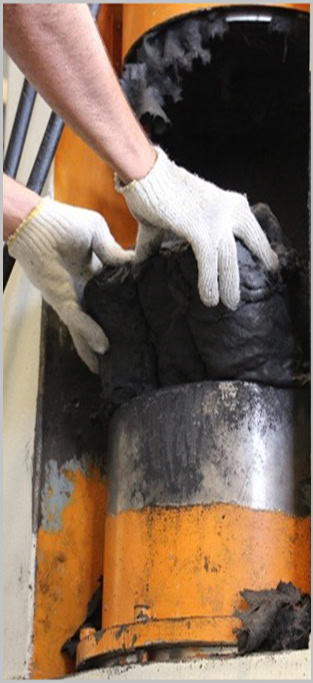
“Deflashing” is a secondary manufacturing process in thermoset molding to remove excess material or “flash” from molded parts. Whereas a thermoplastic molded part is molded as a finished part ready to ship, thermoset molded parts must be flashed with excess material around the part to avoid molding defects and short shots. The parts can be deflashed manually by hand using a file or ceramic knife, or it can be in a more automated, batch process by tumbling the parts in deflash equipment that blasts media at the part to remove the flash. Media used to deflash the parts in deflash equipment includes thermoplastic media, walnut shells, or other abrasive materials that is strong enough to remove the part without damaging any part details or dimensions. (more…)
 Why are thermosets commonly used in injection molding applications for electrical parts and components? Thermosets exude exceptional electrical stability, high dielectric strength, and resistance to arc and track to protect electrical products and internal components from electrical charge. Parts including circuit breakers, terminal blocks, and electrical connectors are molded from thermoset materials to ensure product safety. Whereas a thermoplastic can degrade, disfigure, or ignite; thermosets such as unsaturated polyester BMC and phenolic molding compounds remain durable and strong when exposed to such electrical elements. (more…)
Why are thermosets commonly used in injection molding applications for electrical parts and components? Thermosets exude exceptional electrical stability, high dielectric strength, and resistance to arc and track to protect electrical products and internal components from electrical charge. Parts including circuit breakers, terminal blocks, and electrical connectors are molded from thermoset materials to ensure product safety. Whereas a thermoplastic can degrade, disfigure, or ignite; thermosets such as unsaturated polyester BMC and phenolic molding compounds remain durable and strong when exposed to such electrical elements. (more…)
 Thermoset and thermoplastic materials are two types of plastic molding materials. Each type of material can be injection molded, however the injection molding process differs between each type of resin. While injection molded parts from both thermoset and thermoplastic may have similar aesthetics, the two material types can exude drastically different material performance properties. Thermosets are a material of choice for rugged, industrial type applications requiring high heat resistance or exceptional electrical properties to avoid damage from electrical current. Choosing the correct molding material type depends on the end use application and what material property requirements the end-product needs to withstand to function properly and ensure safety. While thermoplastic materials are more commonly used, product applications requiring further material performance in the areas of electrical strength, heat resistance, and chemical resistance are likely to rely on thermosets as the molding material of choice. (more…)
Thermoset and thermoplastic materials are two types of plastic molding materials. Each type of material can be injection molded, however the injection molding process differs between each type of resin. While injection molded parts from both thermoset and thermoplastic may have similar aesthetics, the two material types can exude drastically different material performance properties. Thermosets are a material of choice for rugged, industrial type applications requiring high heat resistance or exceptional electrical properties to avoid damage from electrical current. Choosing the correct molding material type depends on the end use application and what material property requirements the end-product needs to withstand to function properly and ensure safety. While thermoplastic materials are more commonly used, product applications requiring further material performance in the areas of electrical strength, heat resistance, and chemical resistance are likely to rely on thermosets as the molding material of choice. (more…)
